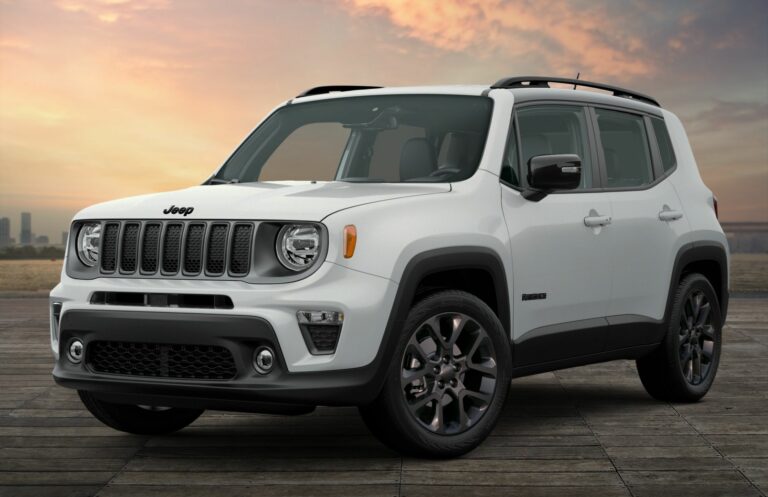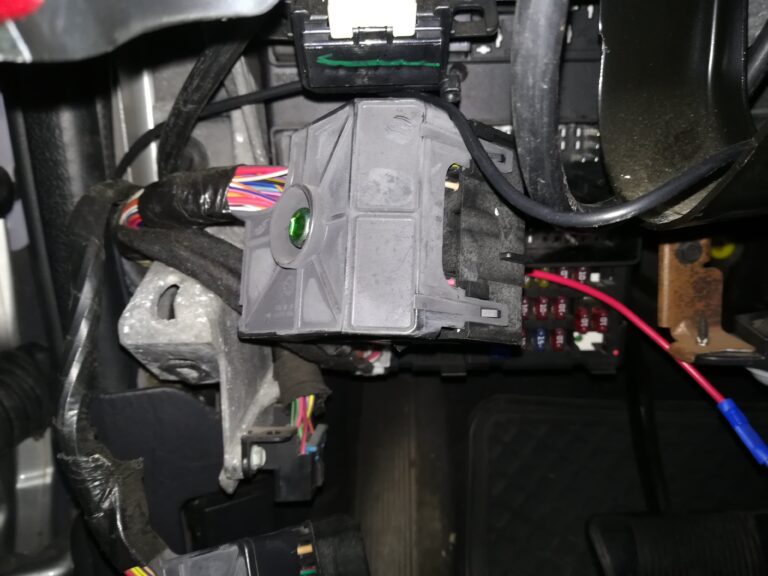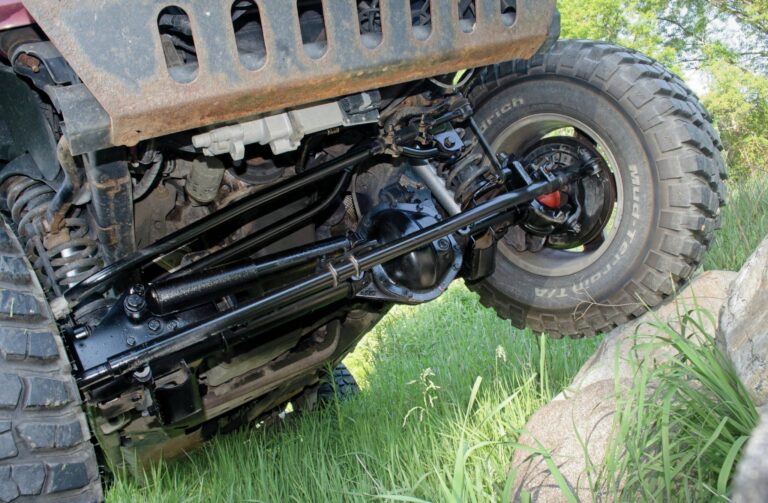1984 Jeep CJ7 For Sale: Your Guide to Acquiring an American Icon
1984 Jeep CJ7 For Sale: Your Guide to Acquiring an American Icon jeeps.truckstrend.com
The year 1984 holds a special place in the hearts of Jeep enthusiasts. It was one of the final full production years for the legendary Jeep CJ7, an off-road vehicle that has transcended mere transportation to become a cultural icon. When you see "1984 Jeep CJ7 For Sale," you’re not just looking at a used car; you’re eyeing a piece of American automotive history, a symbol of freedom, adventure, and rugged capability. This article serves as a comprehensive guide for anyone considering purchasing this timeless classic, delving into its enduring appeal, what to look for, the buying process, and the joys and challenges of ownership.
Why the 1984 Jeep CJ7 Remains a Legend
1984 Jeep CJ7 For Sale: Your Guide to Acquiring an American Icon
The Jeep CJ (Civilian Jeep) series traces its lineage directly back to the military Jeeps of World War II, embodying a spirit of utility and indestructibility. The CJ7, introduced in 1976, was a significant evolution, offering a slightly longer wheelbase than its CJ5 predecessor, which improved ride quality and stability without sacrificing its legendary off-road prowess. By 1984, the CJ7 had matured, offering a range of engine and transmission options, though the most common configuration found today is the robust 4.2-liter (258 cubic inch) AMC inline-six engine paired with either a manual (T-4, T-5) or automatic (TF-999) transmission.
What makes the 1984 CJ7 so desirable for many buyers today?
- Iconic Design: Its unmistakable silhouette, removable doors, fold-down windshield, and open-air driving experience define the classic Jeep aesthetic.
- Off-Road Capability: With solid axles, leaf springs, and a capable 4×4 system, the CJ7 is a formidable machine off the beaten path, even in stock form.
- Simplicity and Modifiability: Its straightforward mechanical design makes it relatively easy to work on for the home mechanic. Furthermore, a vast aftermarket supports virtually any modification imaginable, from mild lifts to extreme rock crawlers.
- Nostalgia and Investment: For many, the CJ7 represents a nostalgic connection to a simpler time. Its classic status also means well-maintained or restored examples tend to hold their value, and often appreciate.

What to Look For When Buying a 1984 CJ7 (Key Considerations)
Purchasing a vehicle that’s nearly four decades old requires a keen eye and a thorough inspection. Here are the critical areas to scrutinize when a "1984 Jeep CJ7 For Sale" catches your attention:
-
Rust – The CJ’s Arch-Nemesis: This is undoubtedly the most crucial factor. CJs are notorious for rust, especially in humid climates or areas where road salt is used.

- Frame: Inspect the entire frame, particularly around the spring hangers, skid plates, steering box, and body mounts. Look for perforations, severe scaling, or amateur patch jobs.
- Body Tub: Check the floorboards (especially under the pedals and seats), rear wheel wells, rocker panels, and the cowl area where the windshield meets the body. Tailgates are also prone to rust.
- Fenders and Hood: Look for rust around the headlight buckets and fender wells.
- Solutions: Minor surface rust can be addressed, but extensive frame or body tub rust often necessitates costly repairs or even full tub replacement, significantly impacting the vehicle’s value and your investment.

-
Mechanical Condition:
- Engine: Listen for unusual noises (knocks, taps, excessive valvetrain noise), look for oil leaks (common but quantify severity), check for excessive smoke from the exhaust (blue = oil, black = rich, white = coolant). Ensure it starts easily and idles smoothly.
- Transmission & Transfer Case: Test all gears in both 2WD and 4WD (high and low range). Listen for grinding, popping out of gear, or excessive whining. Check for fluid leaks.
- Axles: Listen for howling or clunking noises, which could indicate worn gears or bearings. Check for leaks at the differential covers and axle seals.
- Steering & Suspension: Look for excessive play in the steering wheel. Inspect ball joints, tie rod ends, drag link, and track bar for wear. Check leaf springs for sag or broken leaves, and shock absorbers for leaks.
- Brakes: Ensure the pedal feels firm and the Jeep stops straight without pulling. Check for leaks in brake lines or calipers.
-
Electrical System: Original CJ wiring can be a mess, especially if previous owners performed amateur modifications. Test all lights, gauges, wipers, heater, and radio. Look for frayed wires or poor connections.
-
Modifications (Good vs. Bad): Many CJ7s have been modified. Assess the quality of these modifications.
- Professional vs. DIY: Well-executed modifications by reputable shops are generally more reliable than shoddy DIY work.
- Lift Kits: Ensure lift kits are properly installed with appropriate steering and driveline corrections.
- Engine Swaps: V8 conversions are popular but can introduce new challenges if not done correctly (cooling, wiring, emissions).
- Aftermarket Accessories: Check for quality of winches, bumpers, roll cages, etc.
-
Documentation: A clear title is paramount. Any maintenance records, even partial ones, can provide insight into the vehicle’s history and care.
Types of 1984 CJ7s on the Market (Stock vs. Modified)
The spectrum of "1984 Jeep CJ7 For Sale" is wide, ranging from bone-stock survivors to heavily customized beasts. Understanding these categories will help you target the right vehicle for your needs and budget.
- Stock/Original Condition: These are the rarest and often command the highest prices. They are typically owned by collectors or enthusiasts who value originality. Finding a truly unmolested 1984 CJ7 is challenging, as most have seen some form of modification or repair over the decades. These offer a pure, unadulterated classic driving experience.
- Lightly Modified: This is the most common category. These CJs might have a small lift, larger tires, aftermarket wheels, or a stereo upgrade. They offer a good balance of classic aesthetics with improved capability or modern conveniences. Prices are typically in the mid-range.
- Heavily Modified/Resto-Mod: These CJs have undergone significant transformations, often including engine swaps (e.g., modern V8s like LS engines), extensive suspension upgrades, custom interiors, and body armor. They can be incredibly capable off-road or stunning show vehicles. Their value is highly dependent on the quality of the build and the components used, with prices ranging from high to extremely high.
- Project Vehicles: These CJs are typically non-running, in very poor condition, or require extensive restoration. They are the cheapest to acquire but demand significant time, money, and mechanical skill to bring back to life. Only consider a project if you have the resources and expertise.
The Buying Process: Tips for a Smooth Transaction
Once you’ve identified a potential "1984 Jeep CJ7 For Sale," follow these steps to ensure a confident purchase:
- Do Your Homework: Research common issues for the 1984 CJ7. Understand typical market values for vehicles in various conditions.
- Initial Contact: Ask detailed questions about the vehicle’s history, known issues, and recent maintenance. Request clear, high-resolution photos, especially of common rust areas.
- In-Person Inspection: Never buy sight-unseen if possible. Bring a flashlight, a magnet (to detect body filler over rust), and perhaps a knowledgeable friend or mechanic. Spend ample time inspecting all the points mentioned in the "What to Look For" section.
- Pre-Purchase Inspection (PPI): If you’re serious, especially on a higher-priced vehicle, invest in a PPI by a trusted independent mechanic specializing in older Jeeps or 4x4s. They can spot issues you might miss.
- Test Drive:
- Ensure the engine is cold when you start it (to check for cold-start issues).
- Listen for engine and driveline noises.
- Test all gears, including reverse.
- Engage 4WD (high and low range) in a safe area (like a dirt road, not on pavement).
- Test the brakes at various speeds.
- Check for steering play and alignment issues.
- Note any unusual vibrations, pulls, or smells.
- Negotiation: Based on your findings from the inspection and test drive, be prepared to negotiate the price. Factor in the cost of any immediate repairs or necessary maintenance.
- Paperwork: Verify the VIN on the vehicle matches the title. Ensure the title is clear (no liens) and signed correctly. Understand your state’s registration and titling requirements for older vehicles.
- Transportation: Plan how you’ll get the Jeep home, especially if it’s a project vehicle or if you’re traveling a long distance.
Owning a 1984 CJ7: Benefits, Challenges, and Maintenance
Acquiring a 1984 CJ7 is just the beginning of the adventure. Ownership comes with its own set of rewards and responsibilities.
Benefits:
- Unparalleled Fun Factor: Open-air driving, classic looks, and go-anywhere capability make every drive an event.
- Strong Community: The Jeep CJ community is vast, supportive, and knowledgeable, offering resources for parts, advice, and camaraderie.
- DIY Friendly: The simple design means many repairs and maintenance tasks can be done by a reasonably competent home mechanic, saving on labor costs.
- Holds Value: Unlike many modern vehicles, a well-maintained CJ7 tends to retain or even increase in value over time, making it a potentially sound investment.
Challenges:
- Rust Prevention: Ongoing vigilance is required to prevent and address rust. Regular cleaning and undercoating are highly recommended.
- Fuel Economy: Don’t expect Prius-like mileage. The 4.2L inline-six, while robust, is not known for its fuel efficiency.
- Ride Comfort: It’s a rugged off-roader, not a luxury cruiser. The ride can be bouncy, and road noise is significant.
- Safety: Being a product of the 1980s, the CJ7 lacks modern safety features like airbags, ABS, and advanced crumple zones. Drive defensively.
- Parts Availability: While many common parts are readily available thanks to a strong aftermarket, some specific original parts can be harder to source.
Maintenance:
Regular maintenance is key to enjoying your CJ7. This includes routine fluid changes (engine oil, transmission, transfer case, differentials), greasing suspension components, checking universal joints, and inspecting steering and braking systems. Proactive rust prevention and addressing minor issues before they become major problems will save you money and headaches in the long run.
1984 Jeep CJ7 For Sale: Estimated Price Guide
Please note that these are approximate price ranges and can vary significantly based on location, specific engine/transmission, included options (hardtop, winch, etc.), and the seller’s urgency. Always conduct thorough research for your specific market.
| Condition Category | Description | Estimated Price Range (USD) | Key Factors Affecting Price





